|
|
Period:
Yugoslav Wars
Region:
Bosnia's Krajina
The death of 12 newborns from Banja Luka - Bosnia 1992
The death of 12 newborns from Banja Luka is a horrible crime happened in May and June of 1992 during the War in Bosnia and Herzegovina in 1990s and the brakeup of Yugoslavia.
In the Intensive Care Unit of maternity ward in Banja Luka, 12 newborns died due to the lack of oxygen necessary for adequate treatment. Oxygen shortage was a result of blockage of Serbian territory by Croatian and Muslim military forces in the area of Semberija in the northeast of Bosnia and Herzegovina.
The death of these newborns and the increasing lack of basic groceries, and hygiene supply triggered the great military operation “Koridor 92” when the forces of the Army of Bosnian Serbs and the units of the Serbian military forces of Krajina confronted the regular forces of the Army of Croatian Republic and the Croatian paramilitary forces in Bosnia, so-called Hrvatsko Vijeće Odbrane, and the so-called Muslim Army of Bosnia and Herzegovina.
The confrontation lasted for two weeks and resulted in the break of blockage allowing better supply of Western Serbian territories.
Two babies managed to survive, but not for long and not without consequences.
BACKGROUND
SFR Yugoslavia was a federal state made up of 6 republics (FR Slovenia, FR Croatia, SR Bosnia, and Herzegovina, SR Montenegro, SR Serbia, and SR Macedonia). Both Yugoslavia and the JNA were established on the principle of “brotherhood and unity” of all peoples and nationalities who lived in the SFRY.
The social and economic system of the SFRY was socialism.
The 1974 Constitution of Yugoslavia brought about the decentralization of the SFRY, which later enabled the separatist forces in Slovenia and Croatia, and later in Bosnia and Herzegovina to begin the dissolution of Yugoslavia, followed by bloody wars and persecution.
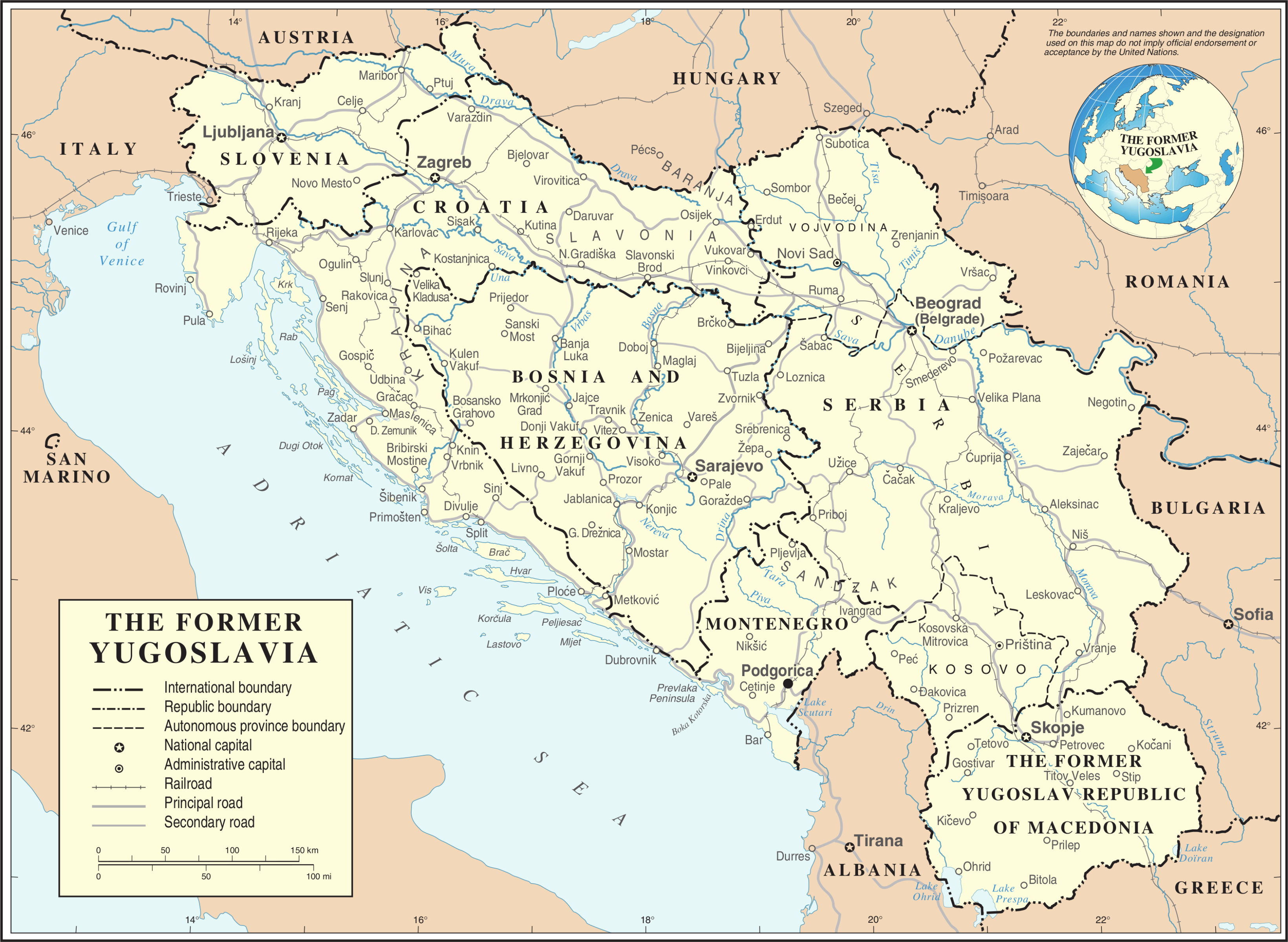
In all the constitutions of Yugoslavia, the Yugoslav People's Army was defined as the only legitimate armed force in the territory of the SFRY, and therefore, the only internationally recognized military entity. At the end of 1989, the SFRY Assembly passed amendments to the Constitution, thus replacing the one-party system with the multiparty system, which meant that besides the Alliance of Communists of Yugoslavia, other parties could now be formed.
At the end of January 1990, the Alliance of Communists of Yugoslavia collapsed, at the 14th SKY Congress in Belgrade, when sharp verbal clashes between Slovenian and Serbian delegates occurred regarding the future of the joint state of the SFRY.

Opposing sides - Kučan and Milosević
The Slovenian delegation left the session, immediately followed by the delegation of the FR Croatia, which brought the issue of the congress into question. After them, the delegations of the FR of Bosnia and Herzegovina and the FR of Macedonia also left the congress.
Thus, after 45 years, the rule of the communists in SFRY ended.
The situation in Bosnia and Herzegovina
Bosnia and Herzegovina has been a central republic within the Socialistic Federal Republic of Yugoslavia, where Muslims, Serbs, Croats, and national minorities lived. On 18 November 1990, a multiparty election took place, the first after World War 2. The government was formed by the anti-communist parties- SDA, SDS, and HDZ. MP that won the highest number of votes (47,4%) was Muslim Fikret Abdić, a businessman from Velika Kladuša.
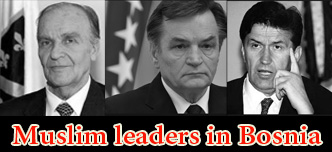
Alija Izetbegović, Ejup Ganić, and Haris Silajdžić
However, he was under pressure by Muslim extremists to step aside since he was against the war and conflicts with Serbs. As it turned out, he only served as bait for Muslim voters.
Alija Izetbegović, a pre-war criminal and author of the notorious chauvinistic “Islamic Declaration” became president of the presidency of B&H. Momčilo Krajišnik, a member of the Serbian party (SDS) became president of the Parliament, while a Croat Jure Prelivan was appointed to the prime minister of the Federal Republic of Bosnia and Herzegovina. The coalition ruled for 15 months. It collapsed at the beginning of the conflicts in Bosnia in April 1992.
Leaders of Muslim Party of Democratic Action- Alija Izetbegović, Ejup Ganić, Haris Silajdžić, and others, advocated the independence of Bosnia and Herzegovina from Yugoslavia as early as 1991. Muslim SDA and Croatian HDZ shared a goal of an ethnically and religiously cleansed state. However, Bosnian Croats wanted integration with Croatia, while Muslims wanted to create an Islamic state.
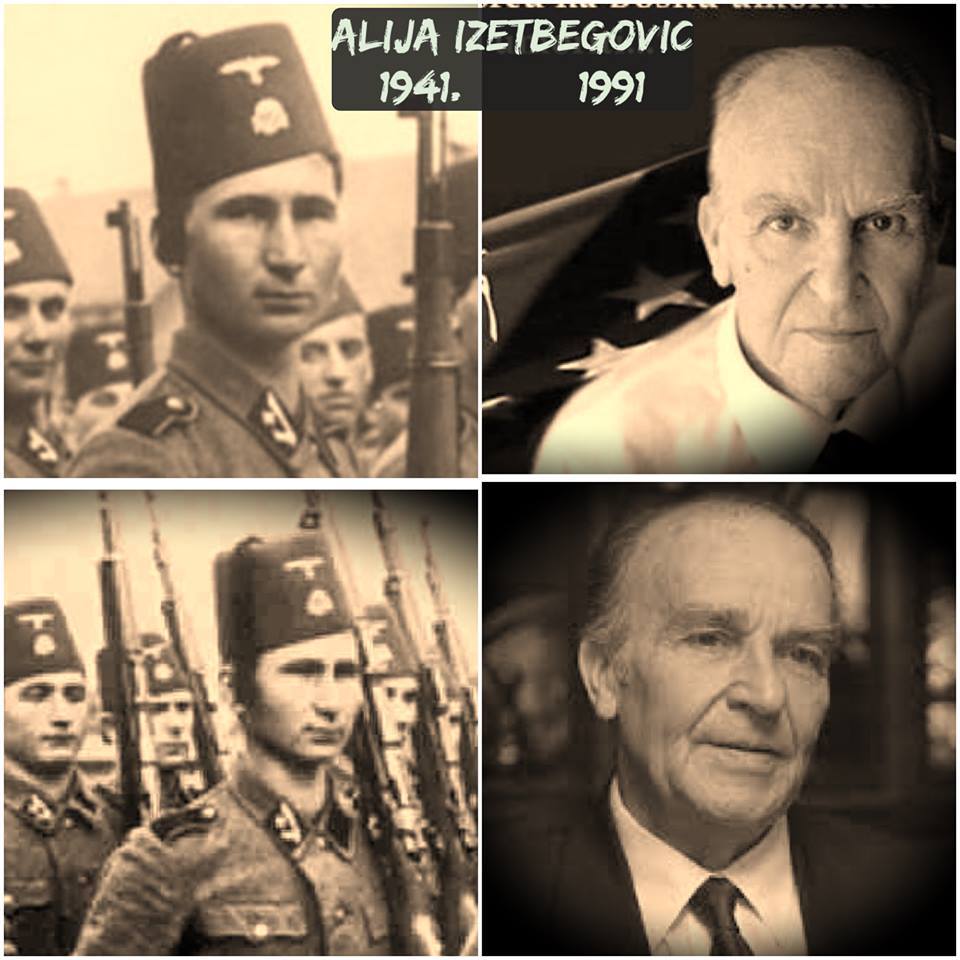
Izetbegović participated in WW II in notorious Bosnian Muslim 13th Waffen
Mountain Division of the SS Handschar (1st Croatian) member,
known for the WW II genocide of Serbs
The Bosnian independence propaganda was spread by the media and press. As early as October 1991, the press in Sarajevo published open threats directed towards Serbian people. Among everything else, it was announced that the notorious Hadschar Division, Ustasha unit that committed horrible crimes against Serbs in the Independent State of Croatia (NDH) during 1941-1944, would be re-established. This unit had been mostly filled with Muslims. Ustasha crimes in NDH reached their peak in Bosnia itself with Prebilovci, Drakulić, Bileća, Gacko, Donja Gradina, Kupres as the most suffering places.
August 1995 witnessed organized arming of paramilitary forces of Muslims and Croats in Bosnia and Herzegovina through channels of the parties SDA and HDZ, intending to attack the Yugoslav People's Army (JNA). In October 1991, local committees of paramilitary units "Green Berets" and "Patriotic League" were established. In the second half of 1991, Mostar was full of members of the JNA, who came from Croatia (Dalmatia and Dubrovnik area), from where they were expelled or withdrawn. They further withdrew in Užice (Serbia) at the end of March 1992.

Sefer Halilović - founder of Bosnian Muslim paramilitary forces
On March 1, 1992 a referendum on the separation of Bosnia and Herzegovina from Yugoslavia was organized with 62.4% of voters having voted for independence. A day later in Sarajevo, members of the "Green Berets", led by a criminal Ramiz Delalić aka Ćelo started shoting at a Serbian wedding party at Baščaršija having killed the groom's father Nikola Gardović and wounded priest Radenko Miković.
This was an event that announced the bloody war in Bosnia-Herzegovina in the 1990s, but this also served as cause to dissolve still nationally-mixed police in Sarajevo. After that, numerous attacks on Serbian positions in Bosnia and Herzegovina and on members of the JNA occured (Sijekovac, Kupres, Sarajevo, Tuzla...). International representatives remained silent to these events.
The situation in Banja Luka
Banja Luka is the largest city in Bosanska Krajina, the northern part of Bosnia and Herzegovina. Banja Luka is situated at the bottom of mountains Manjača and Čemernica, and at the mouth of the Vrbanja river in the Vrbas.
The first evidence of human civilization in this area is traced back to prehistoric time, and later, Illyrians, Celts, and Romans are known to have lived here. In the 6th century, the area was inhabited by the South Slavs. From the 7th to 12th century, the area of Banja Luka and Bosnia as a whole was part of the Byzantine Empire, witnessing occasional invasions of Hungarians.
1494 is the time when the name Banja Luka was first mentioned.
Osmanli Turks came to Balkan and during their attempts to invade Vienna, they conquered Banja Luka and Bosnia in 1528. They brought Islam, and in 1533 Banja Luka became the center of Sanjak of Bosnia. Frequent Austro-Turkish wars in the 17th and 18th centuries led to the desolation of Banja Luka and its countryside, especially in 1737.
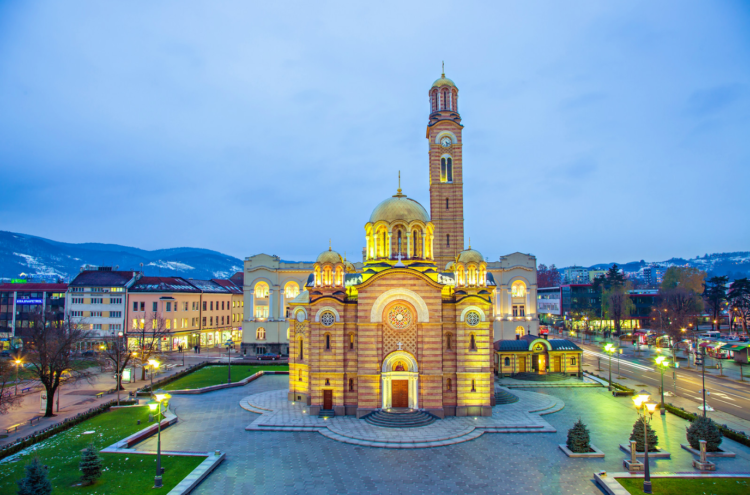
Beautiful orthodox church in Banjaluka
After the Congress of Berlin in 1878, Austro- Hungarian Empire annexed Bosnia and Herzegovina causing deep discontent among the Serbian people, and Muslims as well. The Court in Vienna increasingly conducted terror and tyranny against the Serbian people and this led to the assassination of Austrian Archduke and Crown Prince, Franz Ferdinand, committed by Serb Gavrilo Princip together with the members of the organization Young Bosnia (Mlada Bosna) on Vidovdan in 1914. This event is seen as a trigger of WW1.
After the Great War, the union of the South Slavs into a single country happened on 1st December 1918. According to the administrative division, Banja Luka became part of the Vrbas Banate. The town then faced economic and cultural development.
The attack launched by Germany and its allies on the Kingdom of Yugoslavia in 1941, known as the April war, included the terrific bombing of Banja Luka on April 9, 1941. Soon after, Banja Luka fell under the authority of the Independent State of Croatia (NDH).
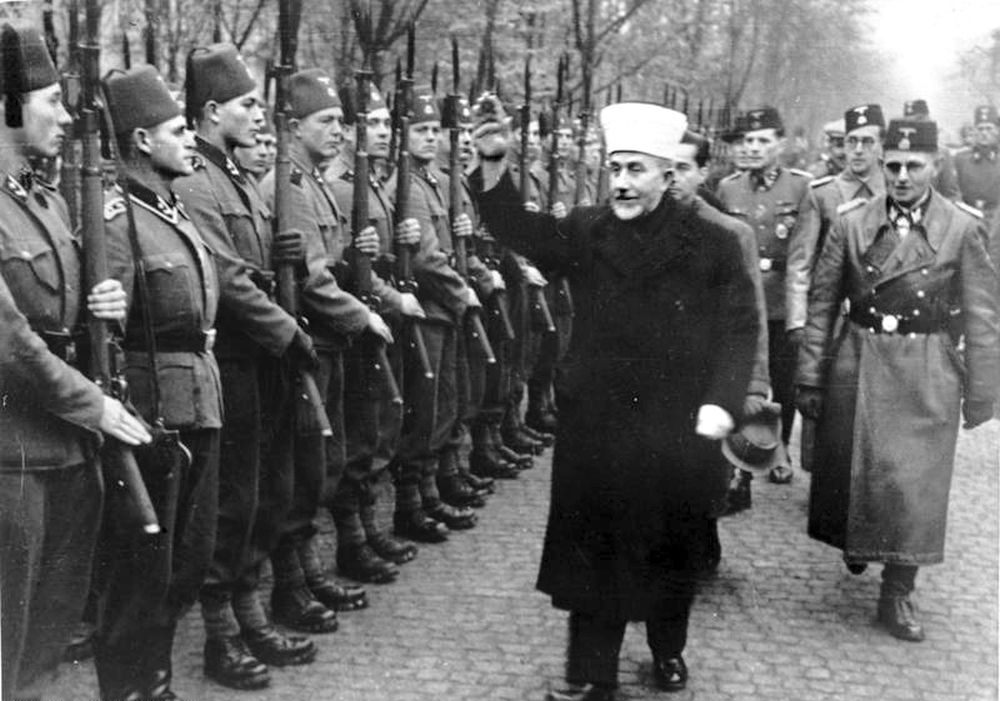
Muslim fascistic forces in Bosnia: Handzar division
Within 4 years, Croatian and Muslim fascists (Ustashas) committed horrific crimes against the Serbian people and the largest crimes happened in February 1942 in the villages: Drakulić, Motike, Šargovac, and Rakovac mine when 2,315 people were killed just in one day (including 550 children).
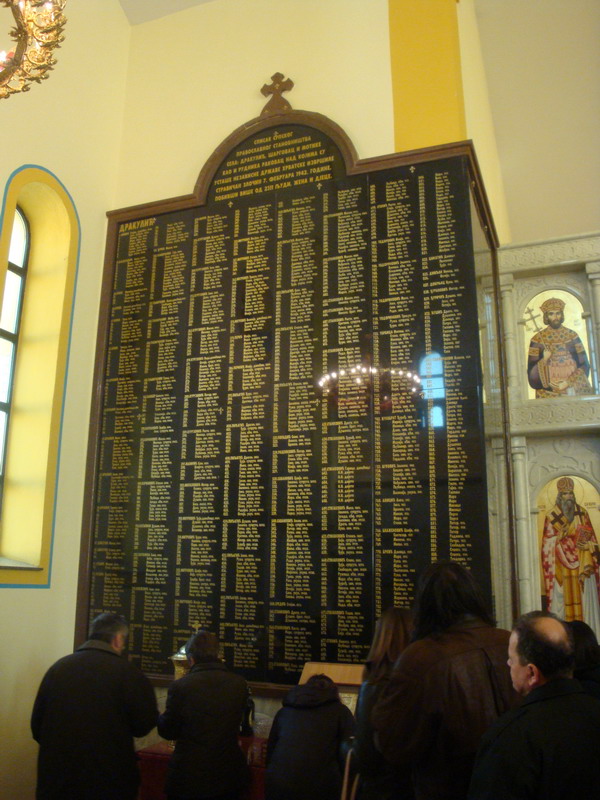
List of Serbian victims in the village of Drakulić
After the Second World War, Banja Luka witnessed facilitating economic growth until October 27th 1969 when a strong earthquake hit the city. It's worth noting that during socialism, 30 state companies operated in Banja Luka.
According to the 1991 census, Banja Luka municipality had 200,000 citizens, or 67% of Serbs, 15% of Croats, and 15% of Muslims.
WAR EVENTS
The city and surroundings of Banja Luka didn't face significant war events, but near Banja Luka, Serbian soldiers participated in severe confrontations against the Muslim and Croatian forces which most of the time initiated joint actions.

General Momir Talic lines up of soldiers
The Army of Republic of Croatia committed aggression against Bosnia and Herzegovina, first in the northeastern parts of B&H in countryside of Brčko, Odžak Bosanski Brod, and Orašje, and then in the southwestern parts of B&H: Čapljina, Duvno, Lijevno, Kupres…
This blockage of the Semberija and Bosanska Posavina regions at the end of April and in May of 1992 led to break of communication between the western parts of the Serbian Republic in B&H and the Republic of Srpska Krajina, and Republic of Serbia. The aim of Muslims and Croats was to surround Serbs from all sides and destroy them.
DEATH OF NEWBORNS
Beside food, Banja Luka lacked medical supplies. Many appeals for help were sent, but without any success. Even the UN Security Council and UNICEF ignored appeals.
Soon after, due to the lack of oxygen, 12 newborns died at the Pediatric Clinic in Banja Luka. Doctors tried to use industrial oxygen, which they got from the Republika Srpska Army and several businessman and citizens, but this wasn’t enough to save babies.
|
Name of mother |
Date of birth |
Name of baby |
Date of death |
|
Dušanka Đukić |
22.05.1992 |
|
22.05.1992 |
|
Živka Knežević |
22.05.1992 |
|
22.05.1992 |
|
Fatima Dedić |
23.05.1992 |
|
27.05.1992 |
|
Željka Tubić |
28.05.1992 |
|
28.05.1992 |
|
Zliha Murica-Delić |
01.06.1992 |
|
01.06.1992 |
|
Safeta Medić |
26.05.1992 |
|
02.06.1992 |
|
Nađa Puška |
29.05.1992 |
|
01.06.1992 |
|
Dragoslava Marić |
03.06.1992 |
|
05.06.1992 |
|
Milena Sandić |
15.06.1992 |
|
16.06.1992 |
|
Dragica Komljeković |
01.06.1992 |
|
19.06.1992 |
|
Majda Đuran |
17.06.1992 |
|
17.06.1992 |
|
Grozda Raus |
28.05.1992 |
Vladimir |
19.06.1992 |
BABIES THAT SURVIVED
Slađana Kobas was born on June 18, 1992, and she was the baby that fought to survive from May 22 until June 19, 1992. The lack of oxygen seriously damaged her health leading to permanent visual impairment, brain and lung damage. Later, she fought bone cancer. She died on February 9, 2006 at the age of 13. She was buried on February 11 in Prijedor.

Sladjana Kobas, one of twelve stars
Marko Medaković was born on June 21, 1992. After delivery he was without oxygen for 10 minutes, which caused him to breath with ⅓ of lungs and suffer from cerebral paralysis, hematoma on brain and spine curvature. Snježana Brezo made a documentary about him which was presented at the Film Festival in Berlin.
AFTERMATH
Seven days after the death of the last baby, the Republika Srpska Army together with the the Army of Srpska Krajina established corridor with Serbia allowing regular supply of oxygen.
Later, people named this historical military success Koridor 92 (The Corridor of Life) because it allowed delivery of new babies, as general of the Army of Bosnian Serbs, Momir Talić, said:
- “I don’t want children to die anymore”.
YEARS LATER
The authorities of Banjaluka city made a monument for 12 newborns at the center of the city. Slađana Kobas used to visit the monument and light a candle.
Many artists from the Republic of Srpska wrote poems for the babies of Banja Luka, including Slađana Kobas, who became a symbol of the tragedy.

Mothers of the babies made the Association "12 babies" in December 2010. Their aim is to find out who is responsible for the death of their children, but also, they strive to spread the culture of memory so that nobody experience such a tragedy ever again.
Their activities are supported by the highest representatives of the Republic of Srpska authorities. The memorial service is performed for babies every year in May.
Tags:
Please, vote for this article:
Visited: 3449 point
Number of votes: 6
|